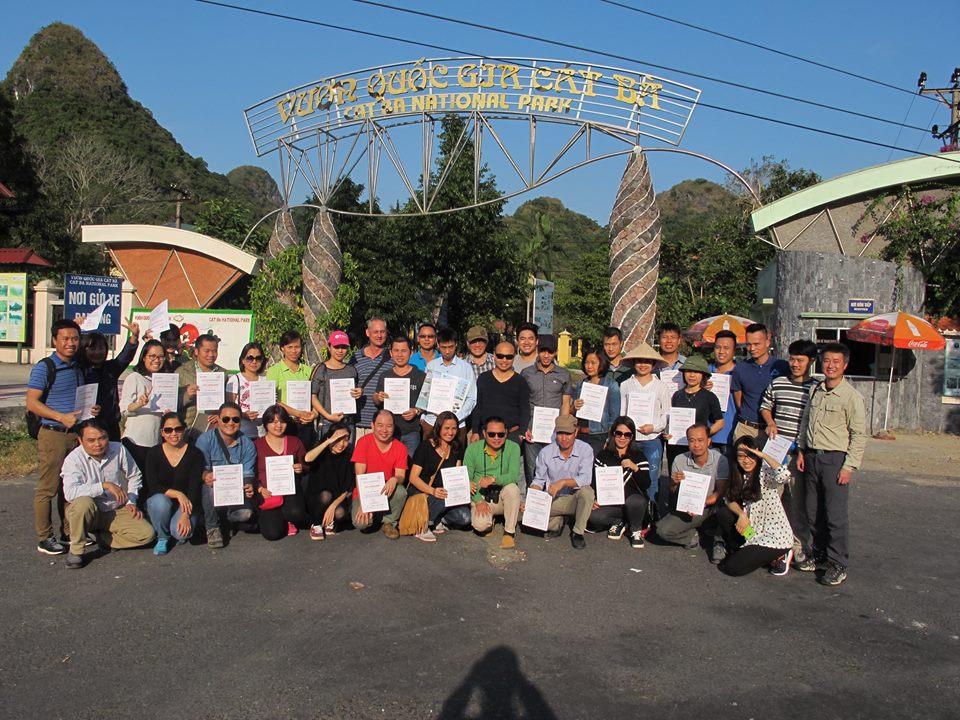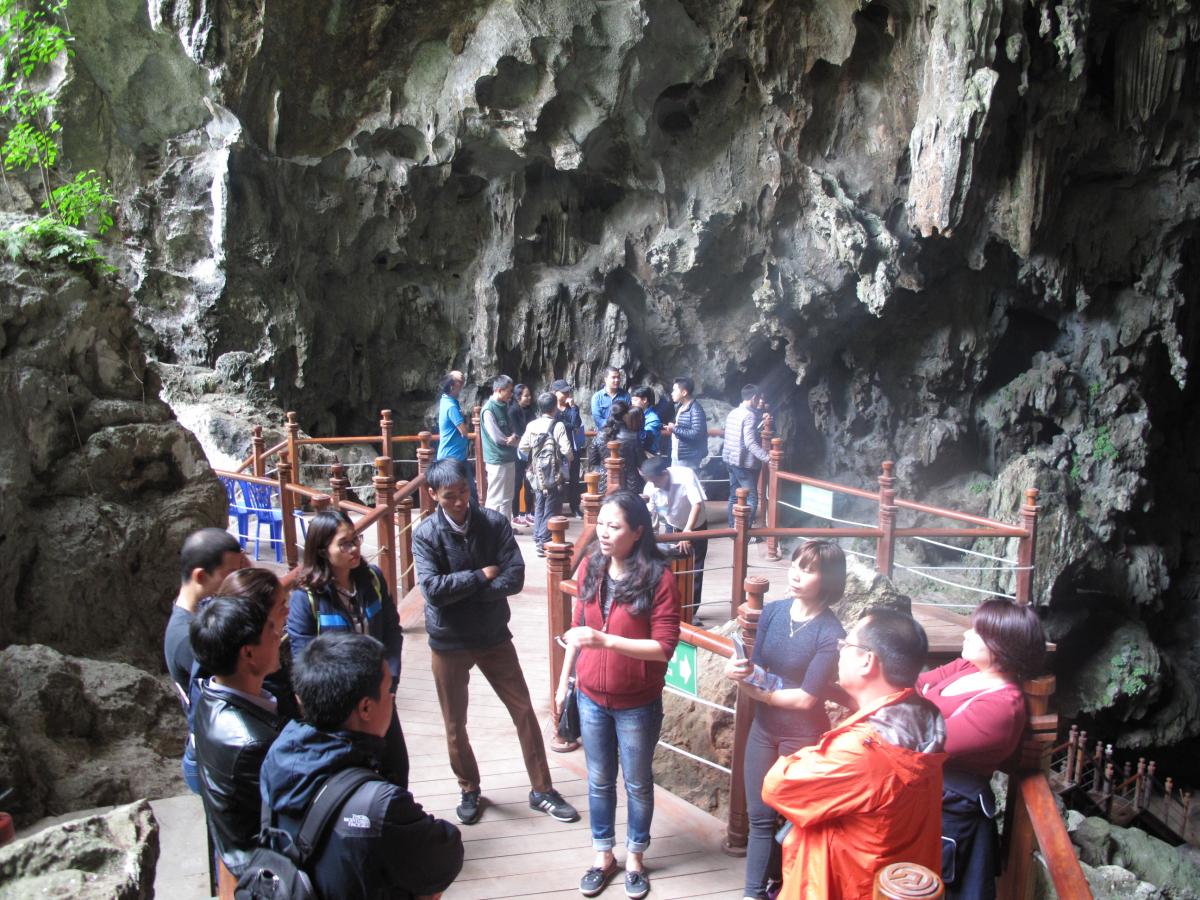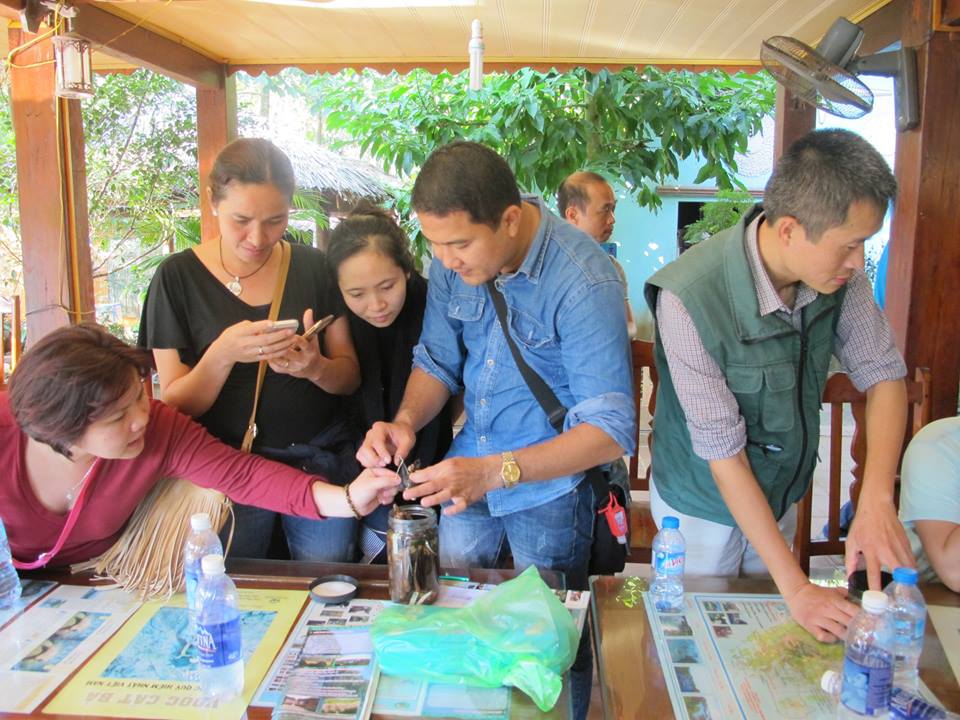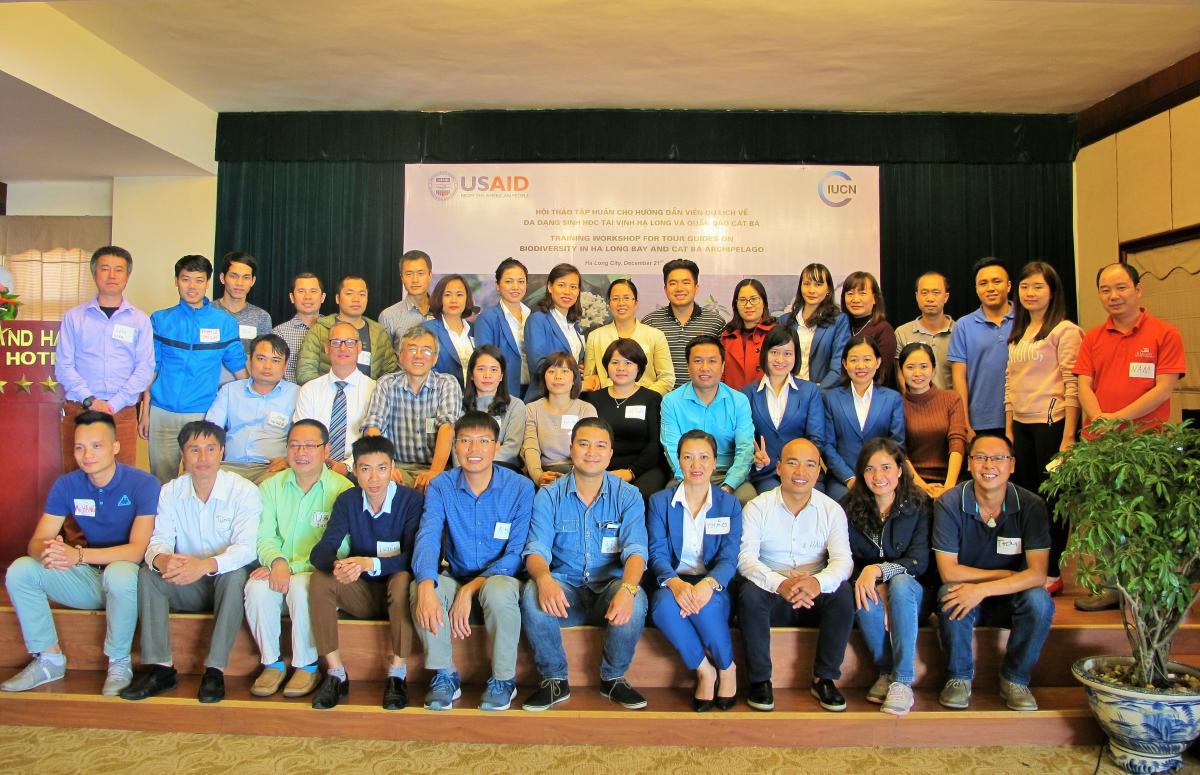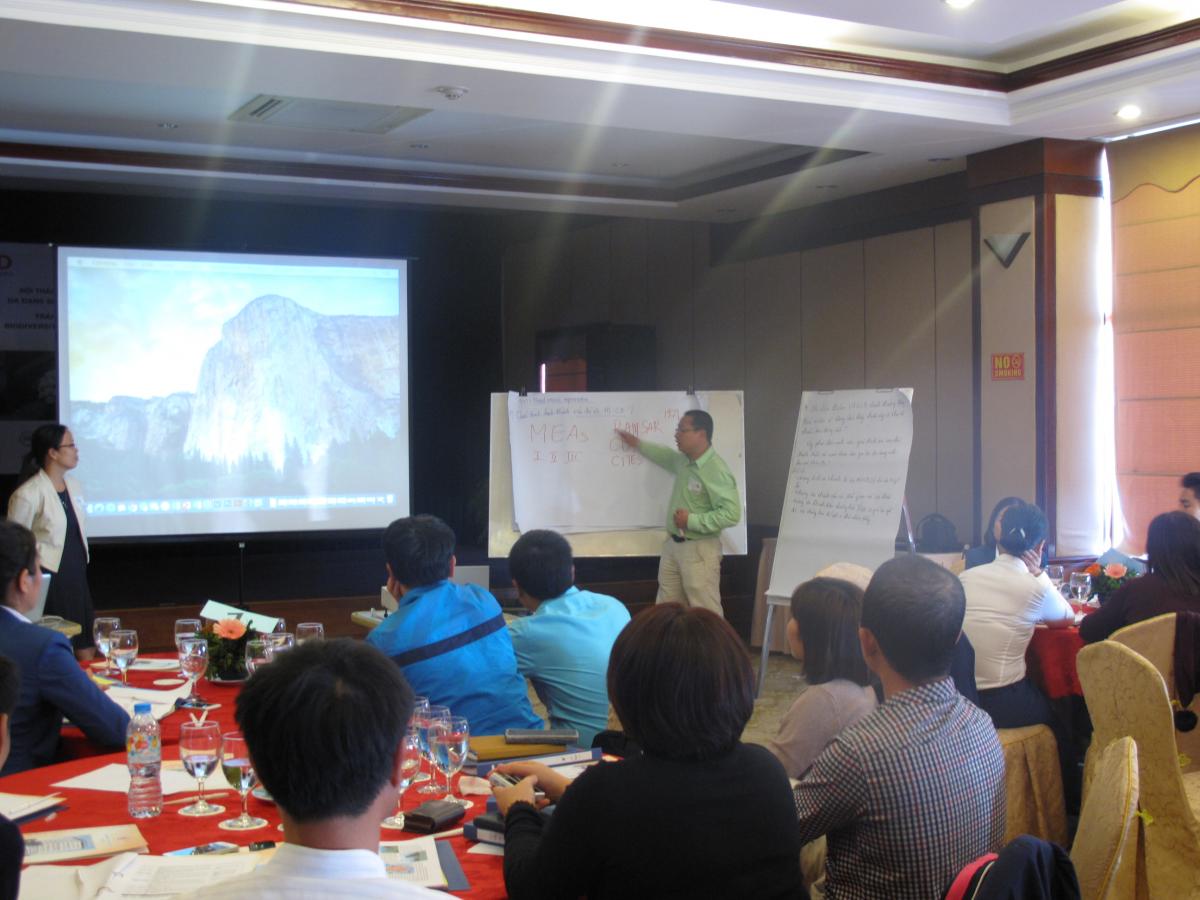Training tour guides on the beauty of nature in Ha Long Bay
“The beauty of Ha Long Bay lies in its unique geographical, landscape, biodiversity and cultural-historical values. Currently, its biodiversity values are poorly known and tourists need more information on this issue. We lack knowledge to turn these values into better products and experiences for tourists and tour guides aren’t capable of delivering this information to their customers. I hope the training will help us develop new tour programs to explore the biodiversity values of Ha Long Bay, reduce pressure on current cave destinations, diversify our services to keep tourists longer, and bring Ha Long to a higher level”. This was written by Luong The Tuyen of Indochina Junk in his application to join the tour guide training on the biodiversity of Ha Long Bay that IUCN organized on December 21-22, 2016.
While very few Vietnamese tourists pay attention to the biodiversity of Ha Long Bay-Cat Ba Archipelago, higher spending visitors from Germany, UK, and other European countries often ask about the natural history of the outstanding karst ecosystem. Typically, tour guides struggle to answer even simple questions such as how do plants survive on the dry limestone surfaces and or why are birds so rarely seen flying over the bay?
In response, tour operators asked IUCN to train their guides on biodiversity. To help improve the visitor experience and increase public awareness of the biodiversity values of the bay and archipelago, IUCN, as part of the USAID-funded Ha Long-Cat Ba Alliance (HLCBA), collaborated with the Institute of Ecology and Biological Resources (IEBR) and HTM Management Consultancy Company, to run a training course for 33 tour guides. Over two days, participants were introduced to key biodiversity conservation concepts, common and endemic flora and fauna, and tested their new skills on tourists in Dau Go Cave in Ha Long Bay and in Cat Ba National Park.
The environmental impacts were also discussed. The need for a sustainable and responsible tourism was strongly emphasised as well as the role that tour guides can play in communicating and calling for proper visitor behavior.
“77% of international visitors to Vietnam seek out travel companies who apply responsible and sustainable tourism practices. Thus, do not think you are just a small tour guide who has no role in management. Your voice is an important feedback to your boss--managers of tourist companies and hospitality corporations. Let’s ask them to think about how to integrate responsible and sustainable tourism into your company’s long-term corporate strategy and collaborate with other stakeholders to take action to implement it. And let’s request your customers to be responsible travellers”, said Kai Marcus Schröter, General Director of HTM Management Consultancy Company.
IUCN’s Nguyen Thi Bich Hien explained that this is the first training on biodiversity for tour guides. Alliance members and partners such as Indochina Junk, Ha Long Bay Management Board, and Cat Ba National Park have asked for more training for their remaining tour guides. The guides who attended the December 2016 training said that they would like to attend additional training even if they have to cover their own costs. They were also interested in other Alliance activities such as the regular coastal clean-ups and volunteer programs.
As part of the Alliance, IUCN will continue to support training and capacity building for businesses as part a multi-stakeholder effort to protect the outstanding values of Ha Long Bay and the Cat Ba Archipelago.
